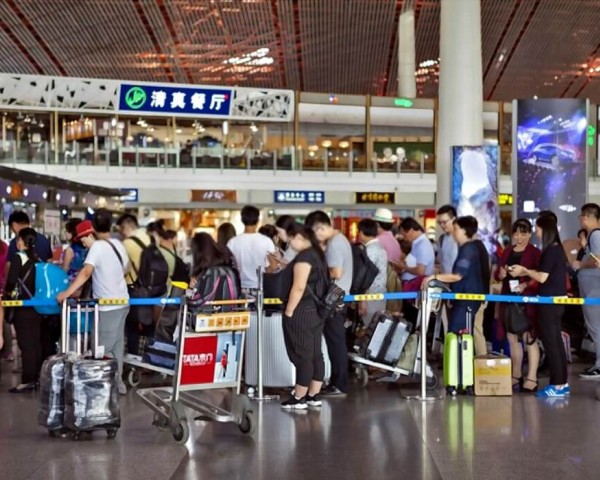Chinese tourists are the most likely to go out of their country and they are also the ones who spend the most. In 2019 – the last year before Covid-19 – 155 million Chinese went on holiday abroad. They spent $255 billion, or a quarter of tourism revenue. By comparison, U.S. tourists, the second-largest international contingent, spent almost half as much.
For a decade, the number of Chinese tourists has been growing, although only wealthy Chinese classes travel. Only one out of ten Chinese has a passport. Among these privileged people, the desire to go elsewhere has materialized by the surge in reservations for the Lunar New Year, as soon as the lifting of restrictions was announced. For the week of January 20, when the Chinese celebrate the Year of the Rabbit, the demand for foreign travel is six times higher than last year.
Just like airlines, the travel industry did expect China to slowly open up over the course of 2023. But that Beijing would give in to the virus virtually overnight and abandon all its measures so quickly was something hardly anyone had thought possible.
In 2021, only 8.5 million Chinese traveled abroad – before the Beijing government further tightened exit rules last year.
Will Chinese Tourists Travel as Much as Before?
Not right away. First of all, because these travelers who have been locked up for three years may need to renew their passports, and above all they must apply for visas, which takes time, at least a few weeks to obtain these two sesames. Except in tourist countries that have provided a simplified online procedure to facilitate the return of Chinese. This is what Thailand did, for example.
In addition to these administrative constraints, Chinese tourists will especially face the lack of transportation: many air links between China and the rest of the world have been suspended because of the “zero Covid” policy, and the surprise lifting of restrictions has deprived companies of the preparation time needed to reactivate the routes. This will take a few months or more. Reopening China’s borders is great news for air travel, but companies will remain cautious.
Rising Prices of Jet Fuel and Tickets
Inflation is eroding the purchasing power of households. It is not certain that the airlines will be able to fill the planes under these conditions. The return to capacity in 2019 will probably not happen in 2023, when there is a big risk of a recession in the world economy. For all these reasons, the projections on the return of Chinese tourists are therefore rather cautious. According to a Chinese research institute, it is from the second half of the year that the Chinese will really leave their country, and over the whole year, there should be about 50 million Chinese travelers.
Which Countries Will Benefit the Most?
Southeast Asian countries, those most dependent on Chinese tourists, certainly have the most to gain from their return. Thailand was the top destination for these visitors: it welcomed twelve million Chinese in 2019, ten million from Japan. The Tourism Authority of Thailand is hoping for at least five million Chinese tourists this year. The pre-pandemic level is expected to be reached as early as next year.
If we rely on the destinations most requested by the Chinese since the end of the “zero Covid” policy, we find, among the top ten, countries very eager to receive them like Thailand or Hong Kong, which have been suffering for three years from the absence of these customers, than the most cautious countries, such as the United States, South Korea or Japan, three countries that require tests at entry. Demand will therefore not necessarily be discouraged by sanitary barriers. France, the most visited European country by the Chinese, is not part of this top ten, but it is actively preparing for their return.
Before the pandemic, Thailand was by far the most popular foreign travel destination for the Chinese, ahead of Japan, Vietnam and South Korea.




